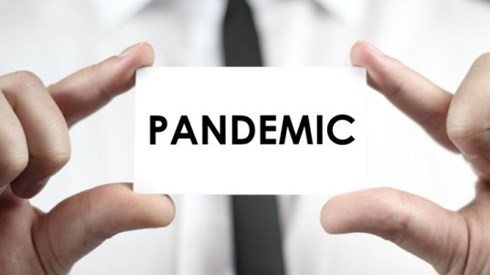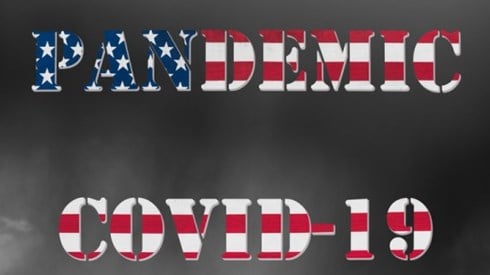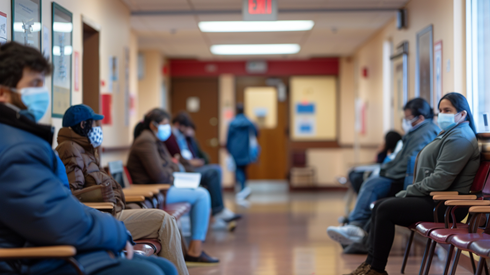While Pandemic Tempers Formations, Captive Use Continues To Expand

March 03, 2021

The COVID-19 pandemic might have slowed the growth of captive insurance in 2020, but use of existing captives has expanded as owners respond to the pandemic and the hardening commercial insurance market.
Looking back at his firm's predictions for the captive industry made early last year, Andrew Berry, chief operating officer and managing director at Strategic Risk Solutions (SRS), said that most of the predictions generally came true.
"The one thing, of course, that we didn't predict was the COVID-19 pandemic," Mr. Berry said. "Our experience is that's kind of tempered some of the growth in captives, use of captives, with competing demands for capital from the parent organizations."
Speaking as part of an SRS webinar titled "Captive Insurance—The Year in Review," Mr. Berry said that despite the impact of the pandemic, "There's been an expanded use of captives in the past year, not just in potentially writing new coverages but mainly in increasing retentions."
Another panelist, Michael O'Malley, managing director at SRS Advisors, said that with insurance buyers facing across-the-board premium increases in the commercial market, they're increasingly looking for alternatives, whether forming a new captive insurance company or expanding the use of an existing one.
"What we're seeing specifically is uses of captives we haven't seen before," Mr. O'Malley said, such as writing coverage in the excess tower or writing a piece of the umbrella coverage in the captive, "to try to retain some control over the program."
The trend is evidence of many captive owners' view of captive insurance as a "toolbox," there to support the parent's insurance program in good times and available to step in in a crisis to solve problems and allow the captive owner to assert control over the insurance program, he said.
Mr. O'Malley acknowledged that the COVID-19 pandemic has put a strain on capital in many business sectors, affecting many companies' ability to form or expand captives. A recent SRS survey found that nearly half of respondents reported that the pandemic had a negative or severely negative impact on their business. But less than 5 percent indicated they expect to decrease the use of their captive.
"We've seen certain industries really go out of business and shut down the captive," Mr. O'Malley said. But SRS has also seen captive insurance companies make distributions of surplus or loans to the parent to help them through the pandemic, he said.
In response to the pandemic, several captive insurance companies have added business interruption or other pandemic coverages, Mr. O'Malley said. "I think going forward, a lot of entities are going to be looking for opportunities to expand coverage and reduce uncertainties related to their flow of income."
Andy Hulme, director of underwriting at Strategic Risk Solutions, said he's seeing some captive insurance company owners using their captives for entrepreneurial and strategic uses, such as writing tenant liability coverages, storage unit liability policies, or franchisee programs.
"Some corporates are looking to drive their captives into being a profit center and creating commercial opportunities for their customers or other business partners," Mr. Hulme said.
He's also seeing captives moving into other lines such as trade credit programs, directors and officers coverage, and cyber-risk coverage. Mr. Hulme said going forward, he also expects to see captive insurance companies playing a significant role in addressing pandemic and nondamage business interruption risks.
The impact of increased Internal Revenue Service scrutiny on small captive insurance companies opting to be taxed under Section 831(b) of the Internal Revenue Code is having an impact on recent growth of the captive insurance market, the panelists suggested.
Mr. Berry noted that while new formations were up in 2020, the number of captive closures increased as well.
"We're seeing that the small captive market will continue to shrink or at least not grow based on the Tax Court cases that are out there," Mr. O'Malley said. SRS is seeing considerable caution around new 831(b) captive formations, he said, adding that there are some indications that the small captive shakeout might be stabilizing as the number of closures is decreasing.
Discussing group captives and risk retention groups (RRGs), Mr. O'Malley said that with the hardening market, SRS is seeing more entities looking for alternatives and considering joining groups, and they're also seeing existing groups grow. Still, "We've seen some prospective members to groups delaying that decision as a result of a desire to preserve cash in the COVID operating environment," he said.
RRG numbers fell in 2020 with 8 formations and 16 closures. There currently are 214 active RRGs, the lowest level since 2004 and down from an all-time high of 262.
Medical stop-loss captives "is one area that's really expanded across our portfolio," both through single-parent captives and group captives, Mr. O'Malley said. While COVID-19 caused some market hesitancy in 2020, demand is strong heading into 2021, he said.
Looking at captive insurance trends in different regions of the world, Mr. O'Malley said that in the United States, while stand-alone captive numbers were marginally down in 2020 in large part due to 831(b) "flushing out," cell formations increased significantly.
"In terms of the explosive growth of cells, what we've seen is a broader acceptance of separately incorporated cell structures," he said. "At some point in time, if the cell captive grows to a certain point, they can convert it into a stand-alone."
Among "international domiciles"—Bermuda, the Cayman Islands, and Barbados—Bermuda had 12 formations in 2020 but 47 closures, said Ron Sulisz, president of SRS International, in large part due to a significant number of deregistrations of dormant captives. "One noteworthy item for the Bermuda captive industry is they are seeing increasing utilization," Mr. Sulisz said, with such industries as cannabis and cryptocurrency embracing captive insurance.
In the Cayman Islands, there were 36 formations and 30 closures in 2020, though total premium increased 16 percent from the prior year. "A lot of that increase we're attributing to increased utilization of existing captives," Mr. Sulisz said.
Barbados, meanwhile, saw 16 new licenses approved, 20 suspended, and 13 surrendered last year for a net decrease of 17, he said.
The European captive insurance market continued to experience a small decline in captive numbers in 2020, though the drop was smaller than in 2019, said Mr. Hulme. He said he doesn't think that trend is indicative of the true level of captive insurance activity in Europe, where new formations might be delayed by the fact that due to Solvency II requirements, it can take 6 to 9 months to take a captive from concept to actual formation.
Richard Cutcher, executive producer of the Global Captive Podcast, moderated the webinar.
March 03, 2021




